Advertisements
Advertisements
Question
The given figure shows a circle with centre O and ∠ABP = 42°.

Calculate the measure of:
- ∠PQB
- ∠QPB + ∠PBQ
Solution
In the figure
∠ABP = 42°.
Join PO, QO
∵ Arc PA subtends ∠POA at the centre and
∵ ∠PBA at the remaining part.
∴ ∠POA = 2∠PBA = 2 × 42° = 84°
But ∠AOP + ∠BOP = 180° ...(Linear pair)
`\implies` ∠POA + ∠POB = 180°
`\implies` 84° + ∠POB = 180°
`\implies` POB = 180° – 84° = 96°
Similarly, arc BP subtrends ∠BOP on the centre and ∠PQB at the remaining part of the circle
∴ `∠PQB = 1/2`
`∠POB = 1/2 xx 96^circ = 48^circ`
But in ΔABQ,
∠QPB + ∠PBQ + ∠PQB = 180° ...(Angles of a triangle)
∠QPB + ∠PBQ + 48° = 180°
`\implies` ∠QPB + ∠PBQ = 180°
`\implies` ∠QPB + ∠PBQ = 180° – 48° = 132°
Hence i. PQB = 48° and ii. ∠QPB + ∠PBQ = 132°
APPEARS IN
RELATED QUESTIONS
In the given figure, O is the centre of the circle. ∠OAB and ∠OCB are 30° and 40° respectively. Find ∠AOC . Show your steps of working.
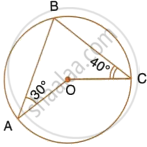
In the given circle with diameter AB, find the value of x.
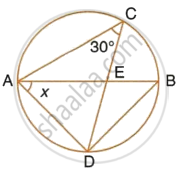
If I is the incentre of triangle ABC and AI when produced meets the circumcircle of triangle ABC in point D. If ∠BAC = 66° and ∠ABC = 80°.
Calculate:
- ∠DBC,
- ∠IBC,
- ∠BIC.
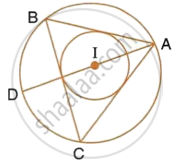
In the given figure, AB = AD = DC = PB and ∠DBC = x°. Determine, in terms of x :
- ∠ABD,
- ∠APB.
Hence or otherwise, prove that AP is parallel to DB.
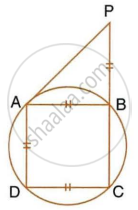
In the figure, given below, AD = BC, ∠BAC = 30° and ∠CBD = 70°.
Find:
- ∠BCD
- ∠BCA
- ∠ABC
- ∠ADB
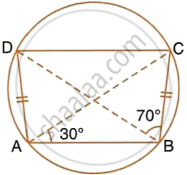
AB is a diameter of the circle APBR, as shown in the figure. APQ and RBQ are straight lines. Find : ∠BPR
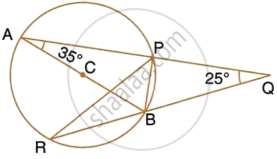
A triangle ABC is inscribed in a circle. The bisectors of angles BAC, ABC and ACB meet the circumcircle of the triangle at points P, Q and R respectively. Prove that :
∠ACB = 2∠APR,

In the given Figure. P is any point on the chord BC of a circle such that AB = AP. Prove that CP = CQ.
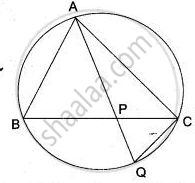
In the given below the figure, AB is parallel to DC, ∠BCD = 80° and ∠BAC = 25°, Find
(i) ∠CAD, (ii) ∠CBD, (iii) ∠ADC.

In the given figure (drawn not to scale) chords AD and BC intersect at P, where AB = 9 cm, PB = 3 cm and PD = 2 cm.
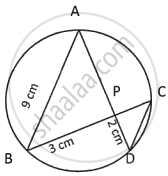
- Prove that ΔAPB ~ ΔCPD.
- Find the length of CD.
- Find area ΔAPB : area ΔCPD.
